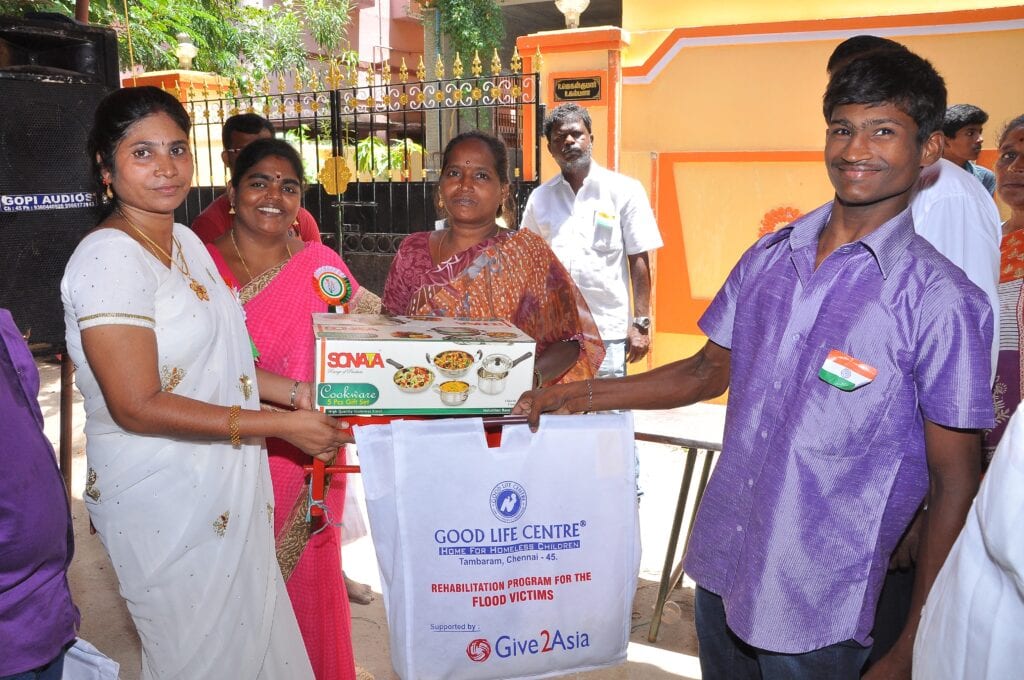“It was a huge wave. They are calling it a tsunami. I have never seen anything like this before in my lifetime. My entire village got swept away. I got saved as I had gone to town.” I remember these words of a 65-year-old fisherman in a coastal village of Nagercoil, Tamil Nadu, post-2004 tsunami. I witnessed many more tragic stories as a relief volunteer, quite helpless but mustering courage to comfort the survivors.
Disasters hit hard, usually taking us by surprise and bringing everything to a stop, especially if one is not prepared for it. So, what is disaster preparedness? Disaster preparedness is defined by the International Federation of Red Cross and Red Crescent Societies (IFRC) as “the measures taken to prepare for and reduce the effects of disasters. That is, to predict and where possible, prevent disasters, mitigate their impact on vulnerable populations, and to respond to and effectively cope with their consequences”.
Disaster philanthropy in Asia and many other parts of the world has predominantly supported relief and recovery activities. Yet in the recent past one can see the significance of investing in disaster preparedness and risk reduction programs that can save more lives, mitigate the severity of any hazards, and help communities to achieve long-term resilience. For example, in Eastern India when cyclone Phailin hit the coasts of Odisha at the rate 200 kmph in 2013, about 700,000 people were evacuated. Similarly, the Philippines and other South East Asian countries are prone to typhoons and floods and the local community-based organizations (CBOs) in these countries have played a significant role in promoting disaster preparedness and increasing community resilience.
Asia is the most disaster prone region in the world and a significant strategy in disaster philanthropy would be to invest directly in supporting CBOs across Asia towards disaster preparedness and disaster risk reduction. This will save lives and resources and help the communities to become more resilient. It is necessary to recognize the power of local communities to effectively prepare for disasters from a bottom-up approach in planning and policy making activities of the national governments and global governance institutions. Supporting and incubating innovations of local CBOs such as early warning systems during floods and typhoons, investing in disaster preparedness strategies such as education campaigns on disasters, capacity building on emergency evacuation planning and also sustainable livelihood planning for disaster prone regions can prove to be very impactful and gain resilience for the communities.
It is also important to take into account that both the UN Millennium Development Goals (MDGs) and the Sustainable Development Goals (SDGs) have emphasized on the need for concerted efforts in the Disaster Risk Reduction (DRR) segment. The SDGs’ recommendation of sustainable development practices can reduce the impact of anthropogenic climate change that causes extreme weather conditions leading to disasters. Perhaps, disaster philanthropy should evolve towards investing resources in addressing the impact of climate change on the environment by supporting sustainable development practices of local CBOs. Strategies to inform private disaster philanthropy to invest in disaster risk reduction and preparedness has gained importance as it is synergistic towards sustainable development practices, especially in the context of resource-poor and vulnerable communities.
In 2014, Give2Asia and the International Institute of Rural Reconstruction (IIRR) launched the NGO Disaster Preparedness Program, building on Give2Asia’s experience in engaging donors in support of locally-led disaster recovery efforts and IIRR’s work directly with the rural poor who disproportionally suffer the impact of disasters in Asia. This program has garnered immense mileage in terms of incubating innovation within CBOs who are mostly the first responders of any disaster and also play a key role in relief, recovery and future preparedness programs.
This March, Give2Asia and IIRR will host ‘Disaster Preparedness and the Power of Local Leadership,’ an international conference to facilitate a vibrant conversation between CBOs and the philanthropic community by sharing knowledge and the best practices of some of the most at-risk local communities. The event will also feature national, regional and community-based leaders who will discuss the challenges for making real impact at the grassroots level. Since disaster preparedness is the cornerstone for mitigating future disasters, this conference will bring together the synergies of the philanthropic community and the local knowledge of CBOs through an open dialogue and also widen the scope for a knowledge-sharing platform in this realm.


















